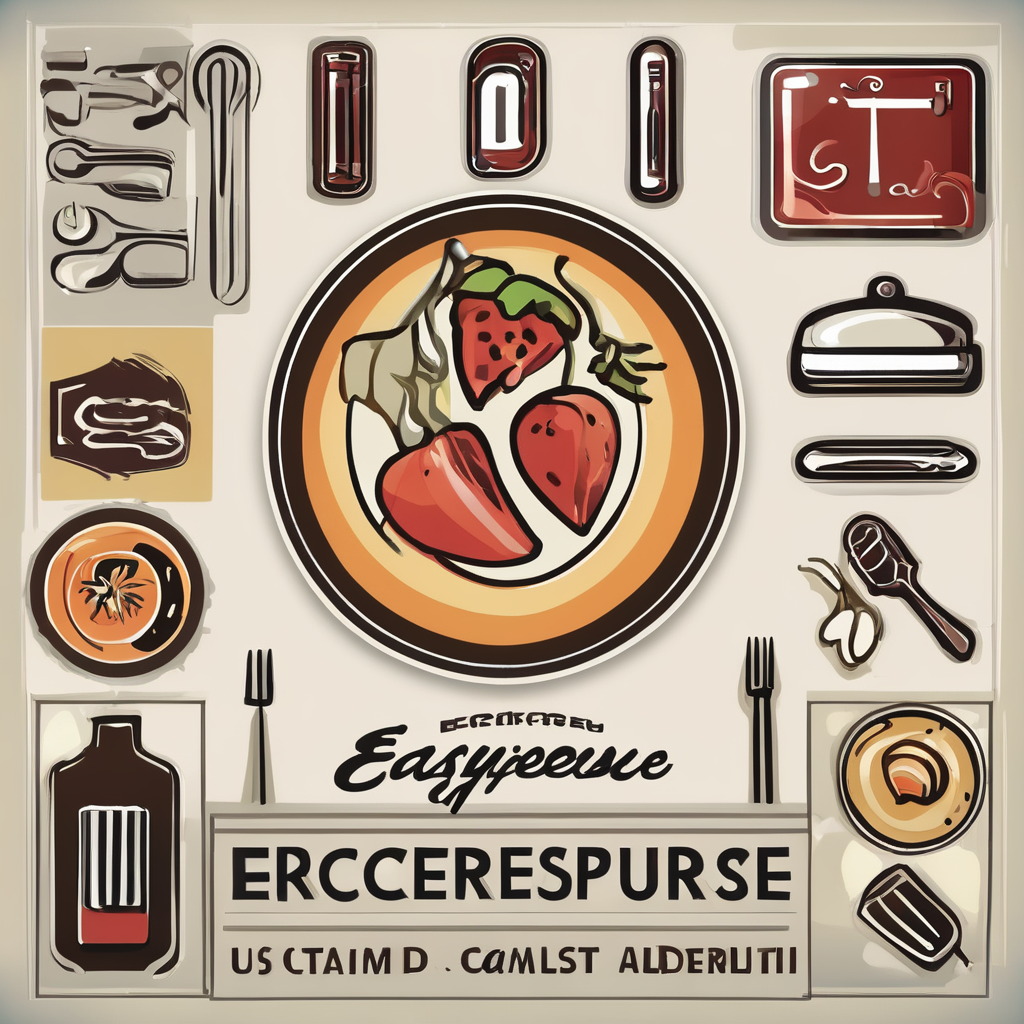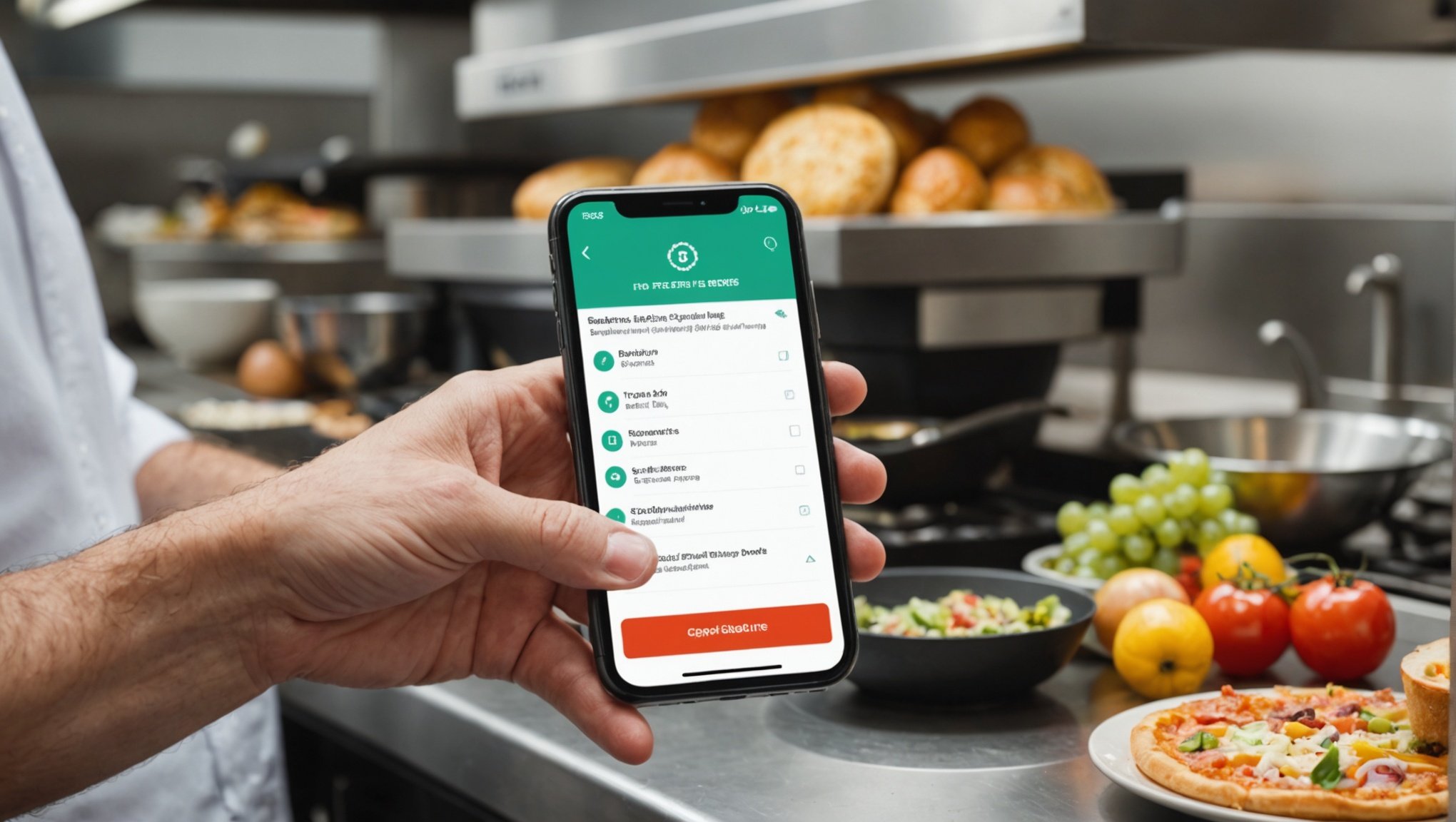Unlocking Food Hygiene Ratings in the UK: Your Guide to Essential Requirements
When it comes to running a food business in the UK, maintaining high food hygiene standards is not just a best practice, but a legal necessity. The food hygiene rating system, managed by the Food Standards Agency (FSA), is a crucial tool that helps businesses demonstrate their commitment to food safety and hygiene. Here’s a comprehensive guide to help you understand and navigate the world of food hygiene ratings in the UK.
Understanding the Food Hygiene Rating System
The Food Hygiene Rating Scheme (FHRS) is a national scheme that provides consumers with information about the hygiene standards in food businesses. Here’s how it works:
Have you seen this : Transform Your Café: Crafting a Serene Ambiance with Innovative Lighting and Decor Ideas
How Ratings are Determined
Food businesses are inspected by local authority environmental health officers who assess the business based on three key areas:
- How hygienically the food is handled – This includes how food is prepared, cooked, and stored.
- The condition of the premises – This includes the cleanliness and condition of the building, including the layout and the facilities.
- How the business manages what it does to make sure food is safe and so that the officer can be confident standards will be maintained in the future – This involves looking at the systems and checks the business has in place to ensure food safety.
Each business is given a rating from 0 (the lowest) to 5 (the highest), which is then displayed at the business premises and often online[3,.
Have you seen this : Transforming Café Vibes: Creative Strategies to Showcase Local Artists” Art in Your Decor
Why Displaying Your Rating Matters
Displaying your food hygiene rating is not just about compliance; it’s also good business sense. According to the FSA, consumers prefer to see food hygiene ratings before placing orders online. Jesse Williams, Head of the Food Hygiene Rating Scheme at the FSA, noted, “A good hygiene rating is something that businesses work hard to achieve, so we want to make it simple for them to share it online.”.
Ensuring High Food Hygiene Standards
To achieve and maintain a high food hygiene rating, your business needs to adhere to strict food safety and hygiene practices.
Training Your Staff
Proper training is essential for ensuring that your staff understand and implement food hygiene practices correctly. In the UK, food business operators are required by law to ensure that their staff are supervised, instructed, and trained in food hygiene matters to a level appropriate to their job.
A Level 2 Food Hygiene course, for example, covers critical topics such as:
- Food legislation and regulations
- Food conservation and storage
- Temperature management
- Personal hygiene
- Hazard analysis (HACCP)
- Prevention of cross-contamination
These courses are designed to provide staff with the knowledge and skills needed to handle food safely and maintain high hygiene standards.
Implementing HACCP and Food Safety Management
Hazard Analysis and Critical Control Points (HACCP) is a systematic approach to identifying and controlling hazards in the food production process. Implementing a HACCP-based food safety management system is crucial for ensuring that your business can identify and mitigate risks associated with food safety.
Here are some key steps in implementing HACCP:
- Identify hazards: Determine the potential hazards associated with each step of the food production process.
- Determine critical control points: Identify the points in the process where controls can be applied to prevent or eliminate hazards.
- Establish critical limits: Set limits for each critical control point to ensure that the hazard is controlled.
- Monitor and record: Continuously monitor the critical control points and keep records to ensure compliance.
- Take corrective action: Have procedures in place to correct any deviations from the critical limits.
Maintaining Clean and Safe Premises
The condition of your premises is a significant factor in your food hygiene rating.
Cleaning and Disinfection
Regular cleaning and disinfection are essential for maintaining a clean and safe environment. Here are some tips:
- Use documented cleaning schedules: Ensure that all areas of the premises are cleaned regularly according to a scheduled plan.
- Separate food storage and preparation: Keep raw and cooked foods separate to prevent cross-contamination.
- Dispose of waste properly: Ensure that food waste is stored and disposed of in a way that prevents pest infestations and maintains hygiene standards.
Managing Chemical and Physical Hazards
Chemical and physical hazards can pose significant risks to food safety. Here are some steps to manage these hazards:
- Store chemicals safely: Ensure that chemicals are stored in designated areas and are clearly labeled.
- Use equipment guards: Use guards on sharp instruments and machinery to prevent accidents.
- Clean broken glass promptly: Use a dustpan and broom to clear broken glass immediately to prevent contamination and injury.
Legal Responsibilities and Compliance
Understanding the legal responsibilities associated with food hygiene is crucial for any food business.
Legal Obligations
Food businesses in the UK must comply with various legal requirements, including:
- Food Safety and Hygiene (England) Regulations 2013: These regulations outline the general hygiene requirements for food businesses.
- Food Hygiene Rating Scheme: Businesses must display their hygiene rating at the premises and can be encouraged to display it online.
Consequences of Non-Compliance
Failure to comply with food safety and hygiene regulations can result in severe consequences, including:
- Legal action: Businesses can face fines, closure, or even prosecution.
- Reputation damage: A poor hygiene rating or food safety incident can significantly damage your business’s reputation and lose customer trust.
- Health risks: Non-compliance can lead to foodborne illnesses, posing serious health risks to consumers.
Displaying Your Hygiene Rating Online
In today’s digital age, displaying your hygiene rating online is more important than ever.
Why Online Display Matters
Only a small fraction of businesses currently display their hygiene ratings online, despite the widespread use of social media and online ordering platforms. However, research indicates that displaying hygiene ratings online can attract more customers and enhance business reputation.
How to Display Your Rating
The FSA provides guidance, free images, and other resources to help businesses display their ratings on websites and social media. Here are some steps to follow:
- Use FSA resources: Utilize the free images and guidance provided by the FSA to ensure your rating is displayed correctly.
- Update your website and social media: Make sure your hygiene rating is prominently displayed on your website and social media profiles.
- Encourage customer feedback: Encourage customers to check and comment on your hygiene rating to build trust and transparency.
Practical Insights and Actionable Advice
Here are some practical tips and actionable advice to help you maintain high food hygiene standards and ensure your business complies with all the necessary regulations.
Key Practices to Implement
- Regular Training: Ensure all staff receive regular training on food hygiene and safety.
- HACCP Implementation: Implement a HACCP-based food safety management system to identify and control hazards.
- Cleanliness and Disinfection: Maintain a clean and safe environment through regular cleaning and disinfection.
- Chemical and Physical Hazard Management: Store chemicals safely and use equipment guards to prevent accidents.
- Online Rating Display: Display your hygiene rating online to attract more customers and enhance your business reputation.
Example of a Successful Implementation
A restaurant that recently implemented a comprehensive food safety management system saw a significant improvement in their hygiene rating. Here’s what they did:
- Staff Training: They provided all staff with Level 2 Food Hygiene training.
- HACCP Implementation: They implemented a HACCP-based system to control hazards.
- Regular Cleaning: They maintained a strict cleaning schedule.
- Online Display: They displayed their hygiene rating prominently on their website and social media profiles.
As a result, they achieved a 5-star hygiene rating and noticed an increase in customer trust and loyalty.
Maintaining high food hygiene standards is crucial for any food business in the UK. By understanding the food hygiene rating system, ensuring high standards through proper training and HACCP implementation, maintaining clean and safe premises, complying with legal responsibilities, and displaying your hygiene rating online, you can ensure your business not only meets but exceeds the necessary standards.
Remember, a good hygiene rating is not just a legal requirement; it’s also good business sense. It builds trust with your customers, enhances your reputation, and ultimately contributes to the success of your business.
Table: Key Components of a Food Hygiene Rating Inspection
| Component | Description | Importance |
|---|---|---|
| Hygienic Handling of Food | Assessment of how food is prepared, cooked, and stored. | Ensures food is handled safely to prevent contamination. |
| Condition of Premises | Evaluation of the cleanliness and condition of the building, including layout and facilities. | Maintains a clean and safe environment for food preparation. |
| Food Safety Management | Review of systems and checks in place to ensure food safety. | Ensures ongoing compliance with food safety standards. |
| Staff Training | Assessment of staff knowledge and training in food hygiene. | Ensures staff are equipped to handle food safely. |
| HACCP Implementation | Evaluation of the HACCP system in place to control hazards. | Identifies and controls hazards in the food production process. |
| Cleaning and Disinfection | Review of cleaning schedules and disinfection practices. | Maintains a clean and safe environment. |
| Chemical and Physical Hazard Management | Assessment of how chemicals and physical hazards are managed. | Prevents accidents and contamination. |
Detailed Bullet Point List: Steps to Achieve a High Food Hygiene Rating
- Conduct Regular Staff Training:
- Ensure all staff receive Level 2 Food Hygiene training.
- Provide ongoing training to keep staff updated on best practices.
- Implement a HACCP-Based Food Safety Management System:
- Identify hazards in the food production process.
- Determine critical control points.
- Establish critical limits.
- Monitor and record critical control points.
- Take corrective action when necessary.
- Maintain Clean and Safe Premises:
- Use documented cleaning schedules.
- Separate food storage and preparation areas.
- Dispose of waste properly.
- Manage Chemical and Physical Hazards:
- Store chemicals safely.
- Use equipment guards.
- Clean broken glass promptly.
- Display Your Hygiene Rating Online:
- Use FSA resources to display your rating correctly.
- Update your website and social media profiles.
- Encourage customer feedback.
- Comply with Legal Responsibilities:
- Adhere to Food Safety and Hygiene (England) Regulations 2013.
- Display your hygiene rating at the premises.
- Regularly Review and Update Your Practices:
- Conduct regular audits to ensure compliance.
- Update your practices based on feedback and new regulations.
By following these steps, you can ensure your business maintains high food hygiene standards and achieves a good hygiene rating, which is essential for building customer trust and enhancing your business reputation.






